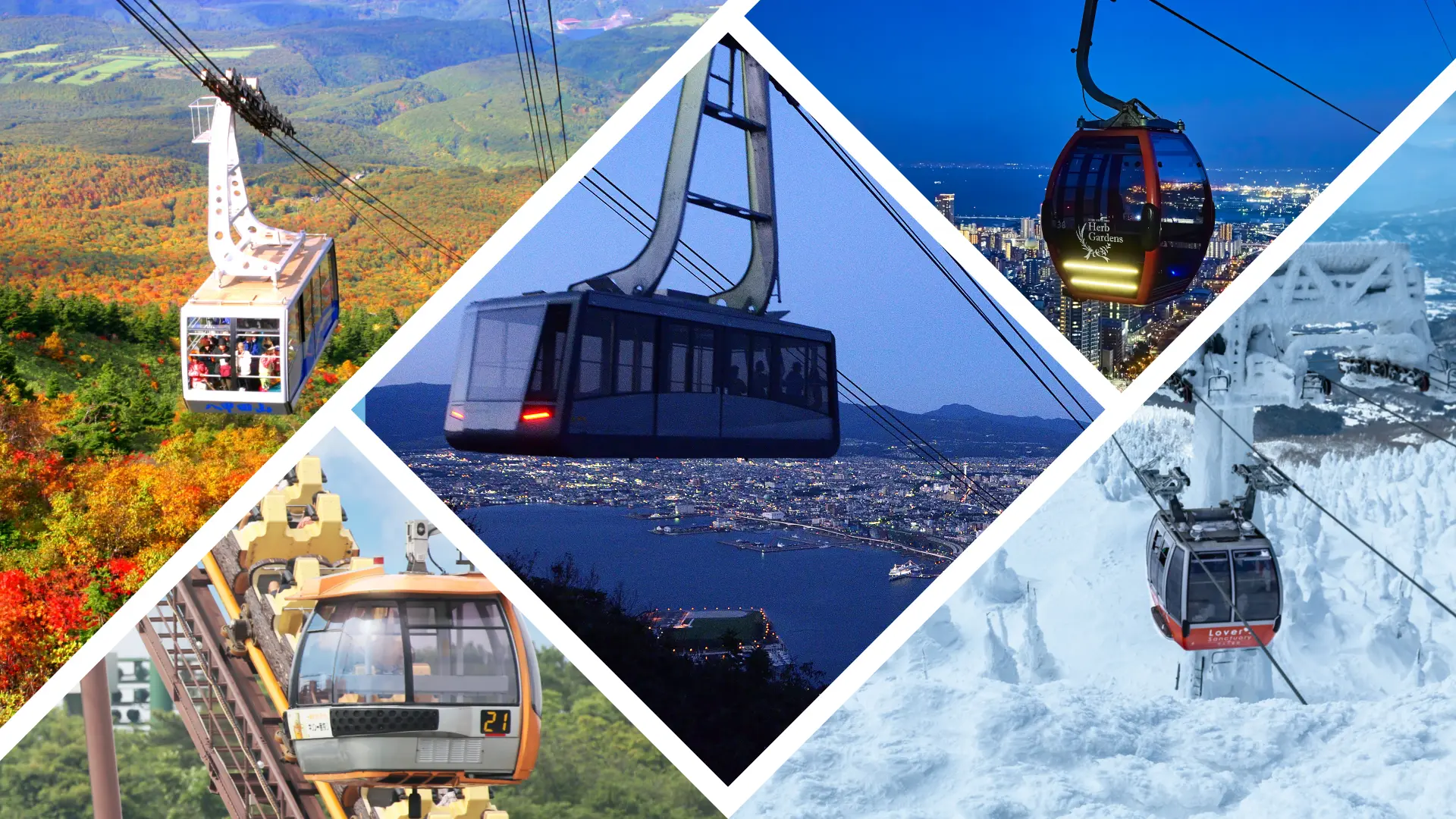
The More You Ride, the More Addictive It Gets! The Appeal of Ropeways & 11 Recommended Routes
Serving as transportation to ski resorts and mountain tourist destinations, ropeways can be found all across Japan. The extraordinary experience of gliding through the air while suspended above the ground, combined with breathtaking seasonal landscapes viewed from above, offers a unique charm that only ropeways can provide. But to be satisfied with just that would be a waste. This time, Makoto Nakajima, a devoted ropeway enthusiast who has ridden routes nationwide and published a guidebook based on his experiences, introduces the niche and fascinating world of ropeways.
From “Train Buff” to “Ropeway Buff”
I have loved trains ever since I was a child. Eventually, I became what you might call a “railfan” and, in 2004, achieved the goal of riding every railway line across Japan. After that, I started attracting attention from TV and magazines, and one day someone said to me, “Ropeways are part of the railway family too, right? Then you have to ride them.” That’s right—under Japanese law, ropeways are classified as “sakudo” (cable transport), a category of railway. That one remark led me to take ropeways seriously, and I went on to complete all of Japan’s roughly 150 ropeway routes. I’m still a railway fan even now (laughs), but I ride ropeways dozens of times a year—at least once or twice a month. People may wonder, “Even though you’ve ridden them all, you still go?” But I always have a reason to go. Whenever the cabins change, the color is repainted, or the facilities are rebuilt, I make sure to ride. Sometimes I even go back just because I wasn’t satisfied with the photos I took (laughs).
Incidentally, there are two types of sakudo: ordinary ropeways and special ropeways. To put it simply, special ropeways are those exposed to the elements, such as ski lifts, while ordinary ropeways are enclosed and protect passengers from wind and rain. Special ropeways, including lifts that might only operate once a year, probably number around 3,000 to 4,000 nationwide. It would be unrealistic to try to cover them all, so please understand that when I say I have ridden every ropeway, I mean all the ordinary ropeways.
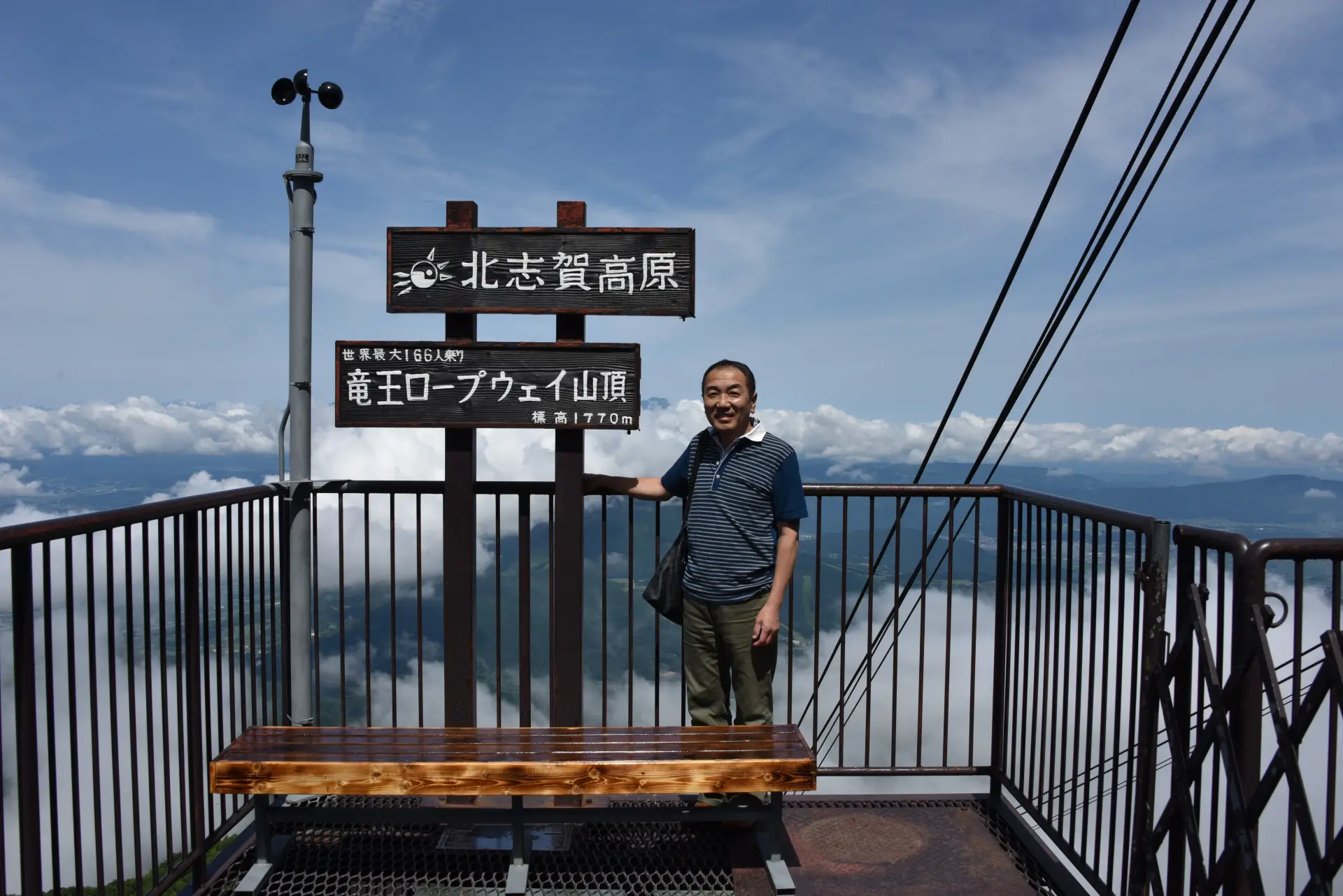
The Fun of Getting Hooked Lies in the Lack of Information
Very few people—myself included—ride ropeways for the sole purpose of enjoying the ropeway itself. While there are many railway fans, I often wonder how many ropeway fans there actually are in all of Japan (laughs). The community of ropeway enthusiasts is definitely not very large.
Another factor is that information available online is overwhelmingly scarce compared to that of railways. There have been countless times when I visited a ropeway and thought, “What? None of this was mentioned anywhere online” (laughs). When a new railway line or train car is introduced, information spreads everywhere long before I ever ride it. But with ropeways, that never happens. Since it’s difficult to gather detailed information online, you really have to go in person and experience it yourself to realize, “Oh, so that’s how it is.” That scarcity of information makes discovering ropeways all the more enjoyable and fascinating.
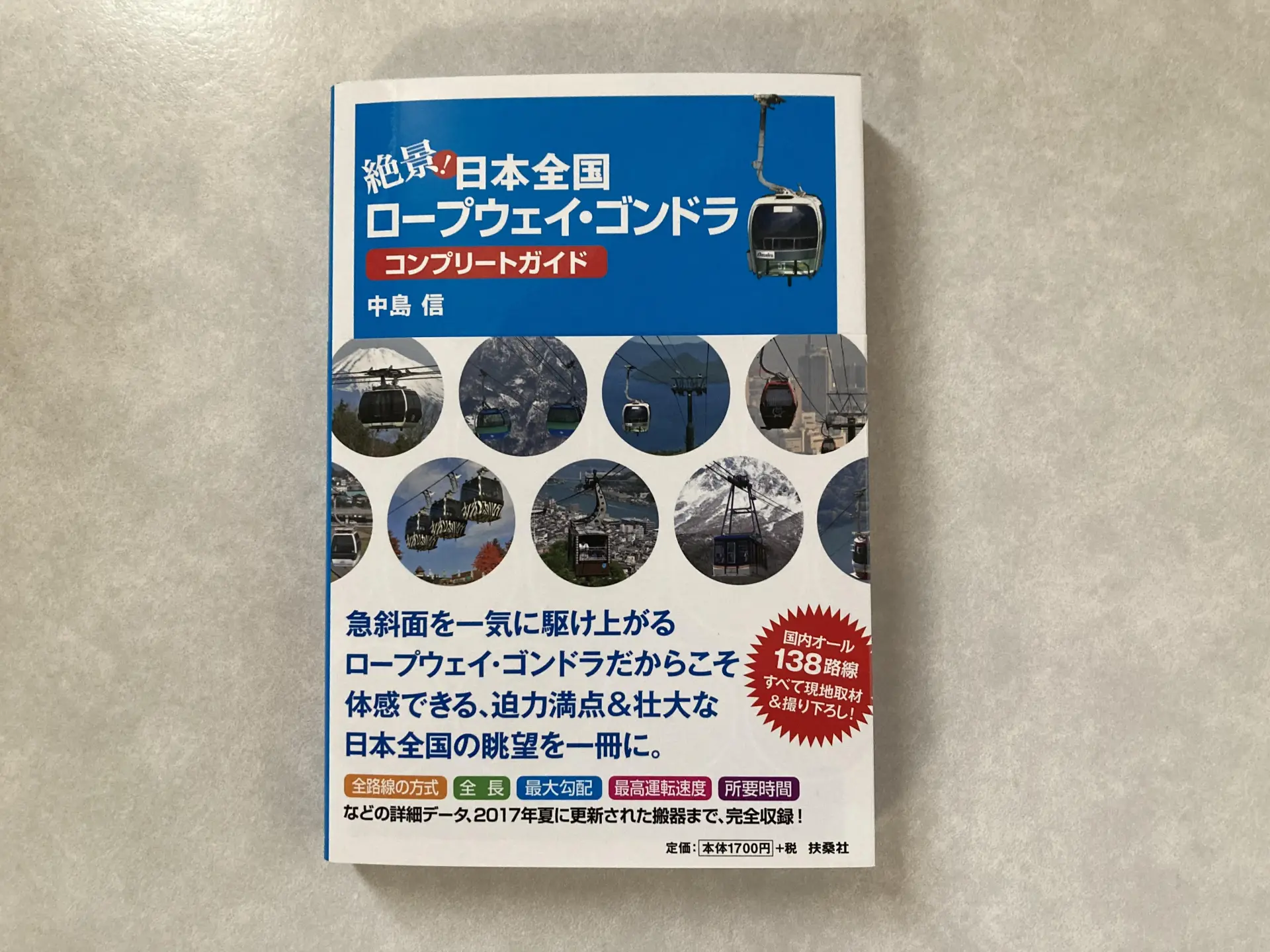
1. The Dramatic Shifts in Scenery That Keep Riders Captivated
What truly hooks you once you ride is the magnificent mountain scenery. Unlike trains that run on tracks laid on the ground, ropeways suspended on cables offer stunning, unobstructed views. And the way the landscape transforms dramatically as you ascend is simply breathtaking.
You can clearly notice when you pass the tree line or when the type of vegetation suddenly changes—the scenery keeps shifting as you ride. On a route with an elevation difference of about 1,000 meters, the base station may still be in early autumn, halfway up the mountain the leaves are at their peak, and by the time you reach the summit, the foliage is already gone and snowflakes are falling. That means you can enjoy autumn foliage on the same ropeway for over a month. And it’s not just autumn—spring cherry blossoms, summer greenery, and winter snow scenes each offer their own unique charm.
Railways go through tunnels when they hit a mountain, but ropeways let you witness the scenery change dramatically in front of your eyes. I think that’s the greatest appeal of ropeways.

2. To Fully Enjoy the View, Head for the Back and Look Down
So, where should you sit to enjoy these spectacular views to the fullest? The clear answer is: at the back—at the rear during the ascent, and at the front during the descent. Just as many train enthusiasts rush to the very front car, I often see people crowding at the front of ropeway cabins regardless of whether they’re going up or down. But without a doubt, the rear offers the best experience, since you can look down at the changing scenery.
Especially when ascending into the unknown, sitting at the back is a must. Watching the landscape spread out below you as the elevation rises is incredibly exciting.
And it’s not just the mountain scenery—the same goes for night views. Looking upward doesn’t offer much, but gazing downward is the golden rule of enjoying ropeways.
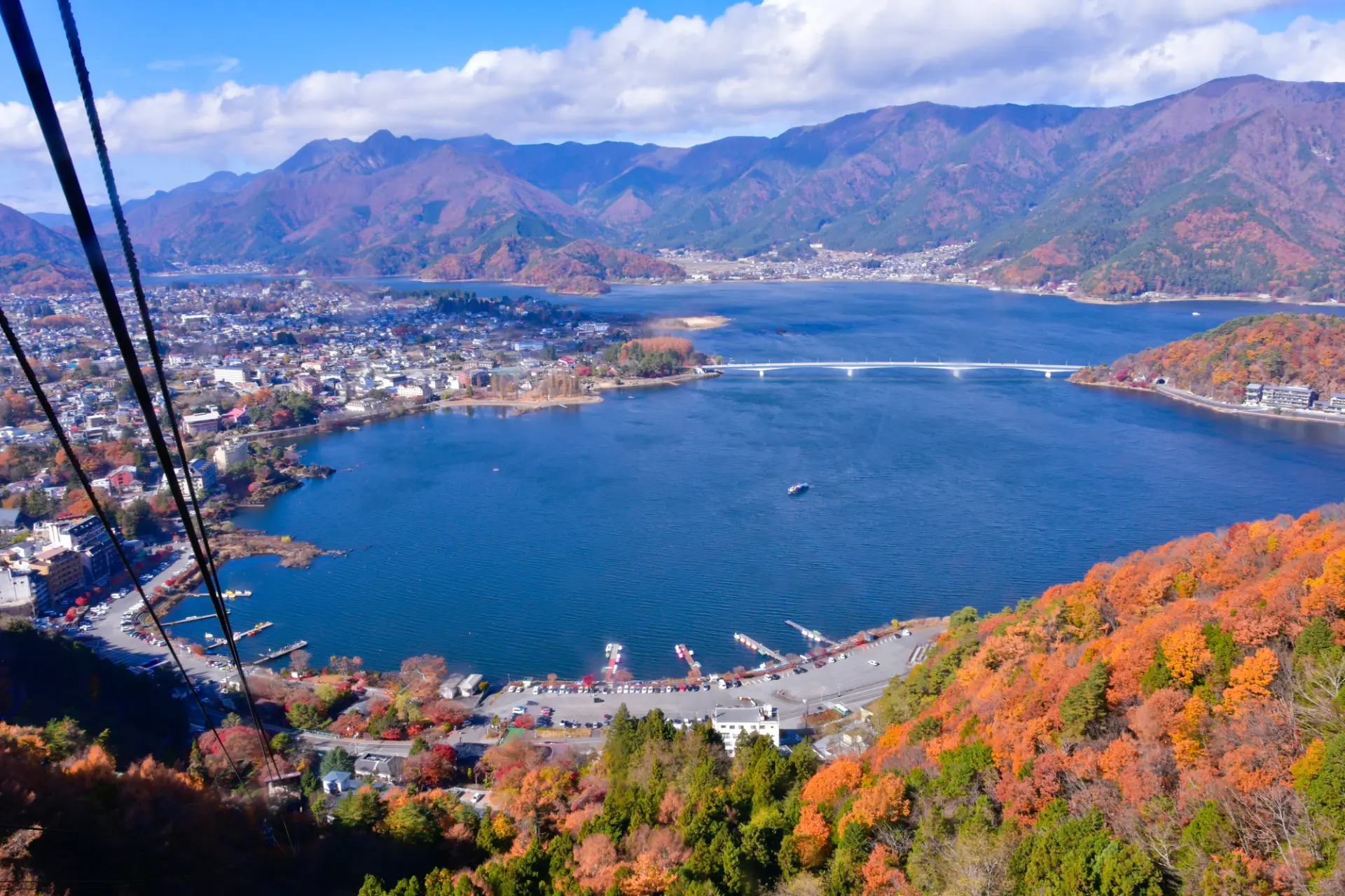
3. Finding the Thrill in Swaying and Vibrations—Once You Know the Mechanics!
Many people say, “The views are nice, but I don’t like how it sways,” and indeed, ropeways do sway to varying degrees depending on the wind. Ropeways are very resistant to snow and rain, but they are vulnerable to wind and lightning—especially wind. Service suspensions during strong winds are commonplace in the ropeway world. However, suspensions are not simply because the cabins sway too much. They’re implemented to prevent accidents in which swaying cabins might collide with support towers. Conversely, routes without any towers between stations are relatively resistant to wind. Even if the cabin swings as much as 60 degrees, it will not come off the rope. If the wind is strong enough to cause truly frightening swaying, the ropeway would be suspended in the first place.
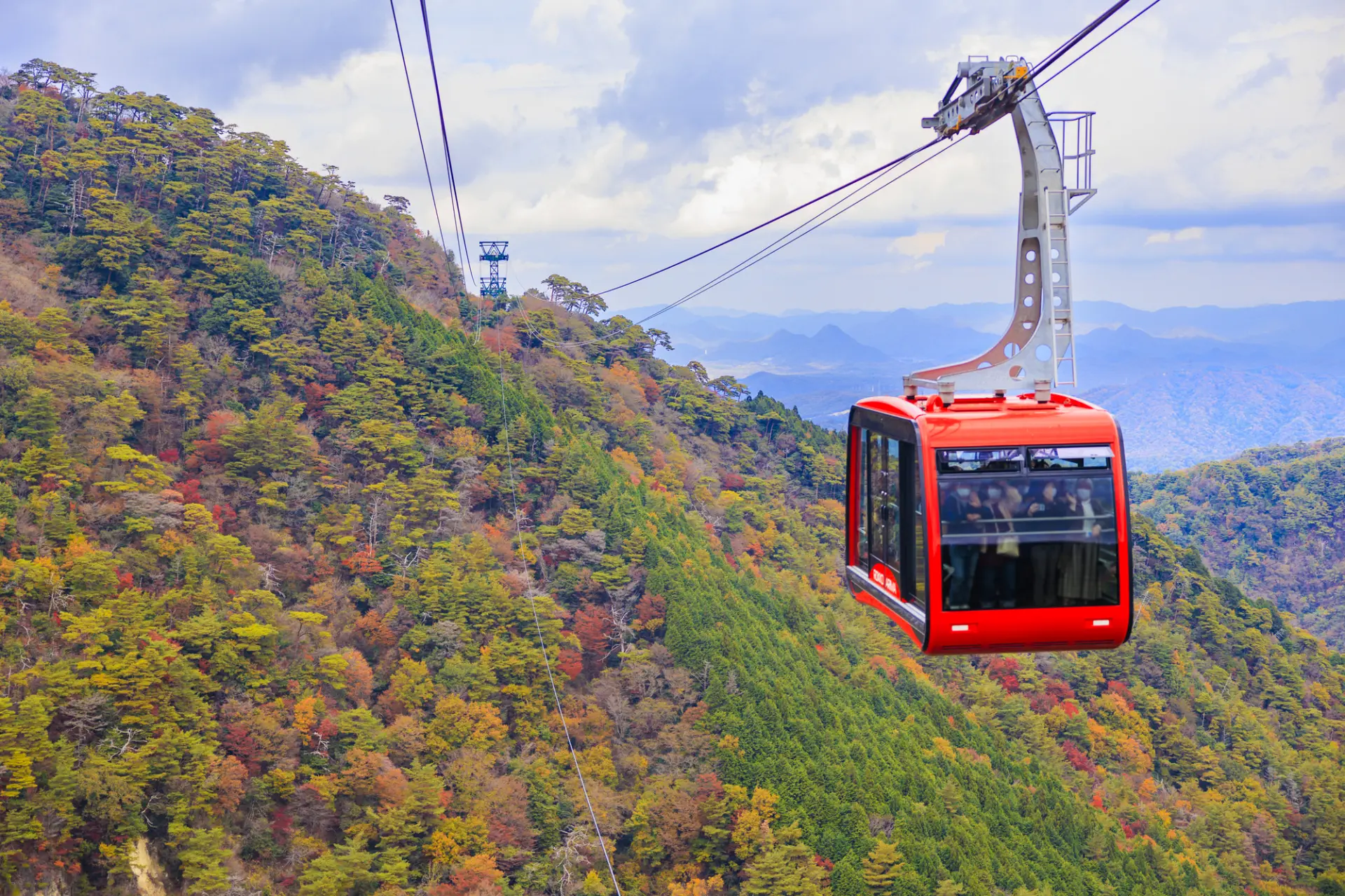
What’s more, I think the thrill most people feel on a ropeway comes less from swaying in the wind than from the vibrations when passing a support tower. From my experience, the moments when passengers suddenly let out a “Kya!” are not during lateral swaying but when crossing a tower—when that rattling “clatter-clatter-clatter” sound and vibration occur. While it’s not so intense on the way up, during the descent the vibration is often followed by a sudden drop-like sensation, which tends to draw even louder reactions. But once you understand these structural characteristics, I think you can actually find excitement in that thrill and enjoy it all the more.
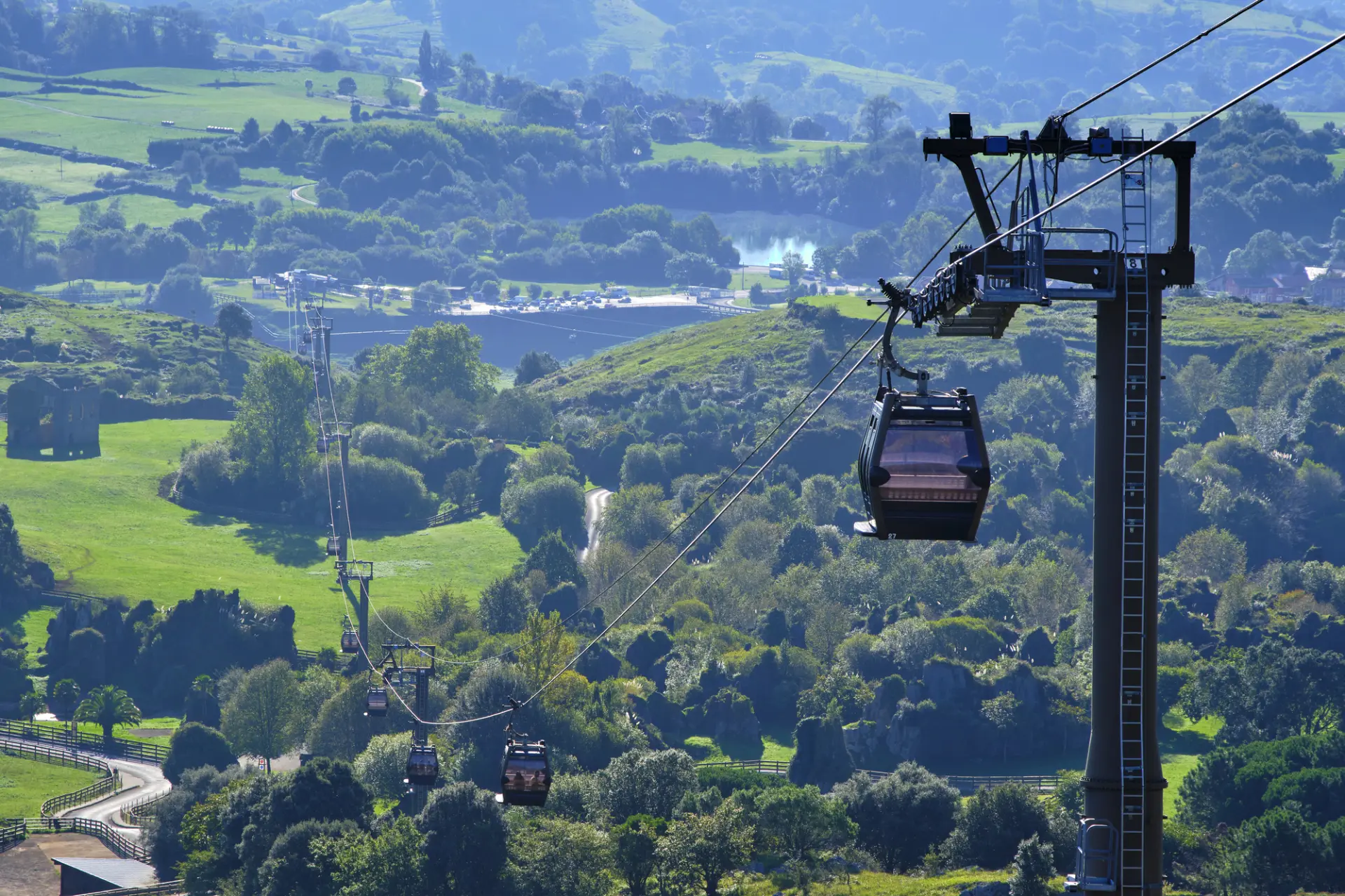
11 Ropeways You Definitely Should Ride
I’m often asked which ropeways I would “recommend” or consider my “favorites,” and every time I struggle to answer—because I honestly love them all (laughs). Still, since I’ve been given the chance, I’ll go ahead and introduce some routes chosen squarely on the basis of my personal “favorites” and “top picks.”
1. [Hokkaido] Mt. Hakodate Ropeway
The most dramatic of Japan’s Three Great Night Views
In Hokkaido, the Mt. Hakodate Ropeway is absolutely unmissable. Its highlight is the night view, counted among the world’s top three along with Hong Kong and Naples. Personally, I think Hakodate surpasses both Kobe and Nagasaki among Japan’s three great night views. The bay, located at the root of southern Hokkaido, has a unique shape, and Mt. Hakodate juts out into the sea, making the night scenery truly dramatic.
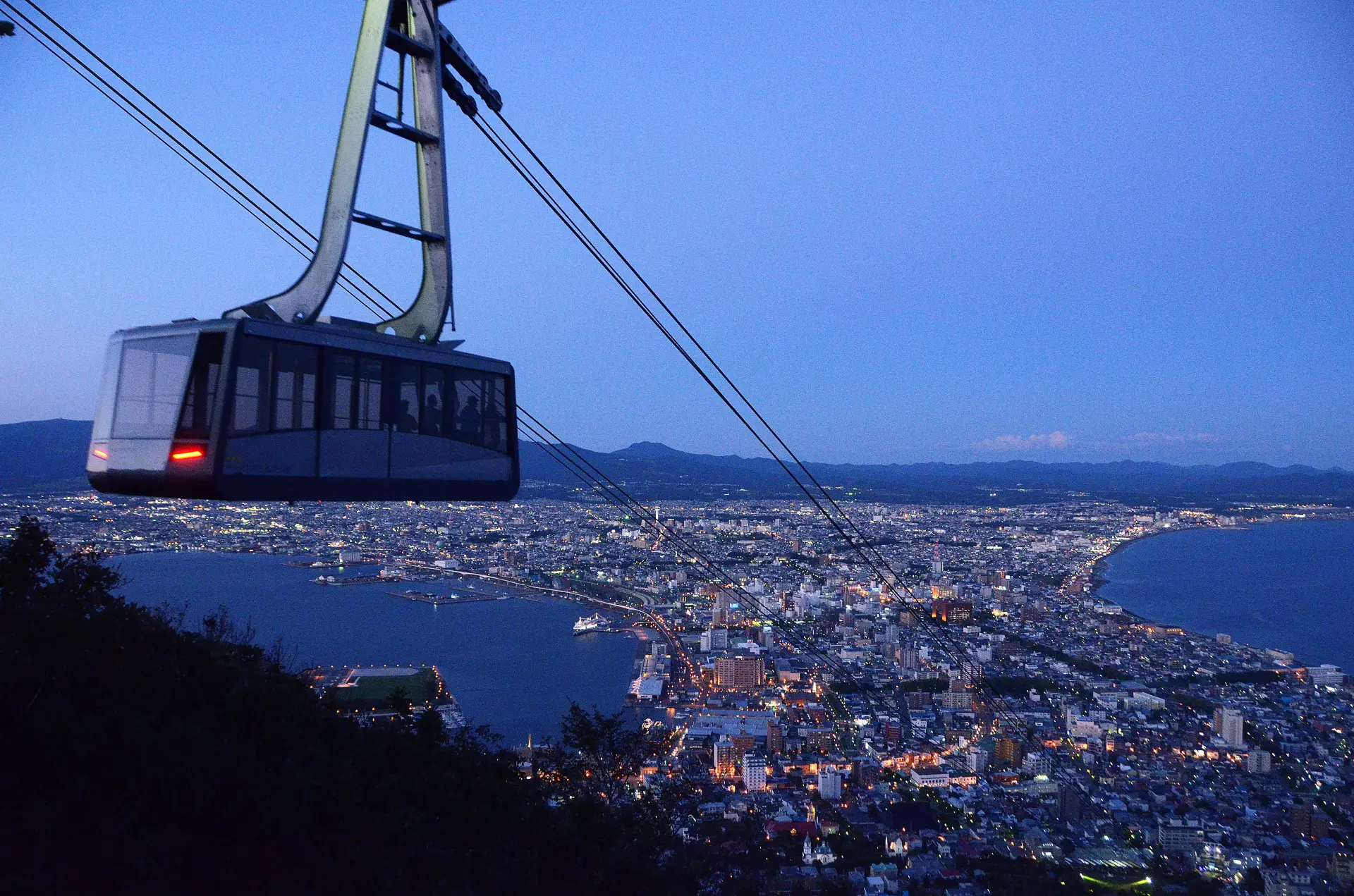
2. [Tohoku] Zao Ropeway
The Funitel system and frost-covered trees in midwinter are the highlights
Of the four lines spanning the Zao mountains, the Zao Ropeway consists of the Sanroku Line connecting Zao Sanroku Station and Juhyo-Kogen Station, and the Sancho Line connecting Juhyo-Kogen Station and Zao Sancho Station. The Sancho Line uses a Funitel system, in which the cabin grips two ropes stretched wider than the cabin itself using a device shaped like deer antlers. This design allows it to maintain exceptional stability even in the harsh weather conditions of the mountains. One of the major highlights is the “snow monsters” (frost-covered trees) that form on the western slope of Mt. Jizo in midwinter. The nighttime viewing events with illuminations are also very popular.
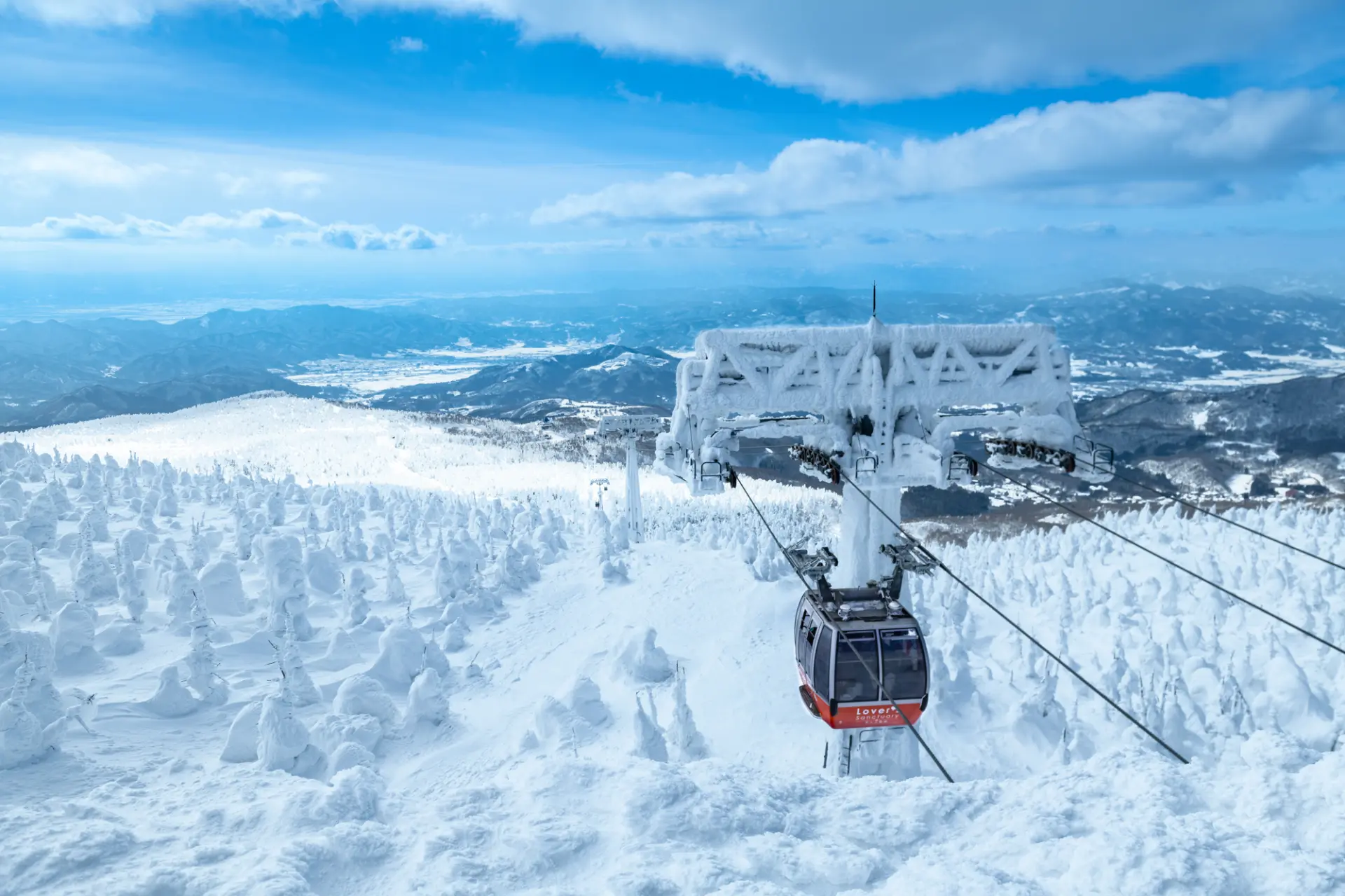
3. [Tohoku] Hakkoda Ropeway
Magnificent scenery in every season
No matter what season you visit, the Hakkoda Ropeway offers wonderful scenery. In addition to the famous autumn foliage and winter snow monsters, the fresh greenery of summer is also spectacular. Because of its naturally windy location and the placement of towers where winds pass through, it does have a relatively high suspension rate, and it’s not uncommon to find it out of operation when you visit. Even so, it is still one of the ropeways I strongly recommend.
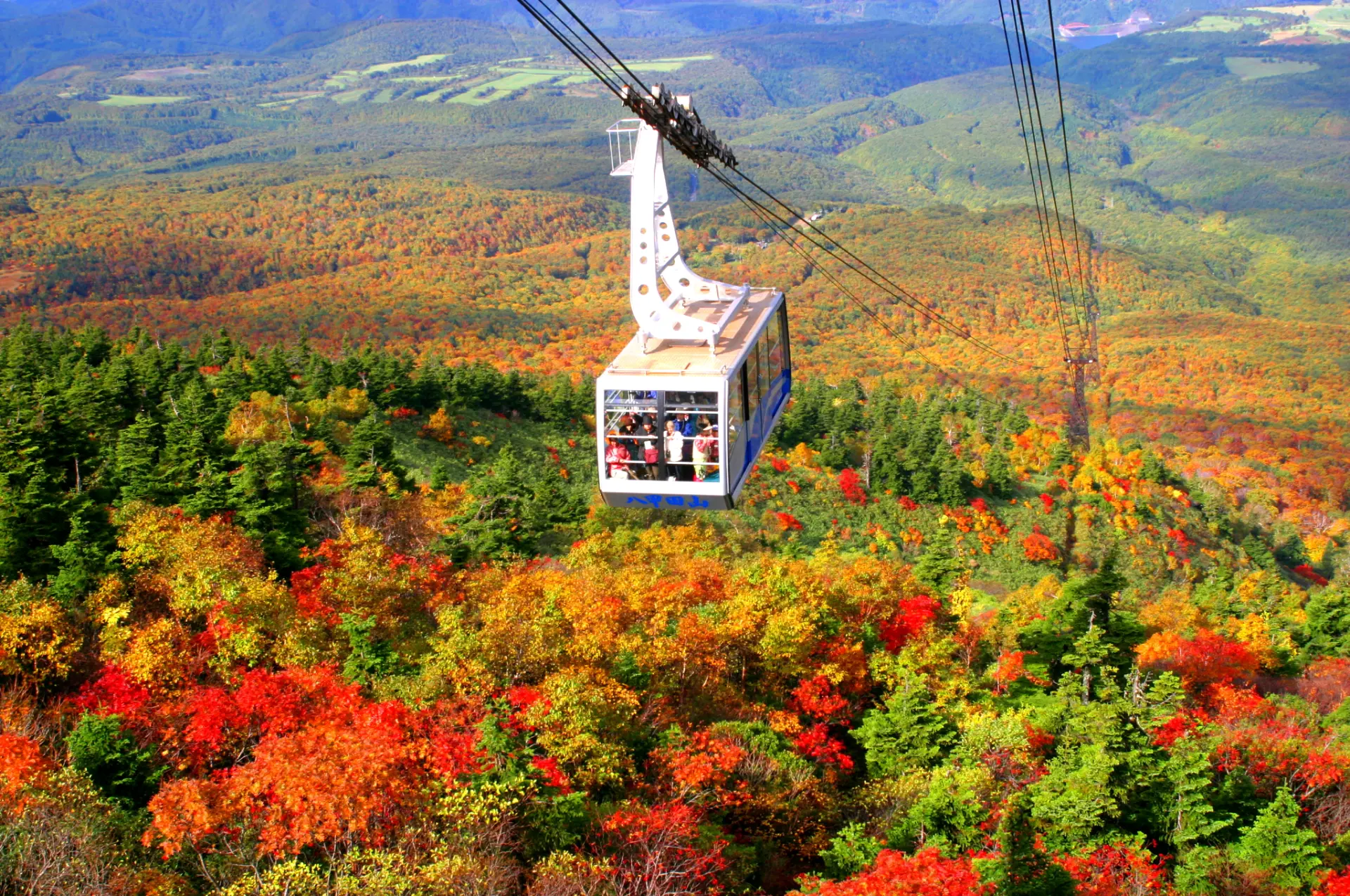
4. [Kanto] Yomiuriland Sky Shuttle
The only ropeway in Japan that crosses a prefectural border
Kanto is a tough choice, but I recommend the Sky Shuttle at Yomiuriland. Its charm lies in its dynamic route. After departing Keioguchi Station (Base Station), it quickly ascends, passes directly above the Yomiuri Giants’ training ground, then gradually descends while weaving between roller coasters before reaching Sancho Station (Summit Station). Another unique point: the base station is in Inagi City, Tokyo, while the summit station is in Kawasaki City, Kanagawa Prefecture—making it the only ordinary ropeway in Japan that crosses a prefectural border. It’s fun to share this trivia while riding (laughs).

5. [Chubu] Shin-Hotaka Ropeway (Takayama, Gifu Prefecture)
Japan’s only double-decker ropeway
In Chubu, the first choice has to be the Shin-Hotaka Ropeway. Spanning 3,171 meters by combining the No. 1 and No. 2 ropeways from the base to the summit, it covers a total elevation difference of over 1,000 meters. Beyond the spectacular alpine views, the unique cabins are highlights themselves. The No. 1 Ropeway uses an all-glass, skeleton-style cabin, while the No. 2 Ropeway is Japan’s only double-decker. Both levels offer the same scenery, but naturally, you’ll want to ride upstairs if you get the chance (laughs).
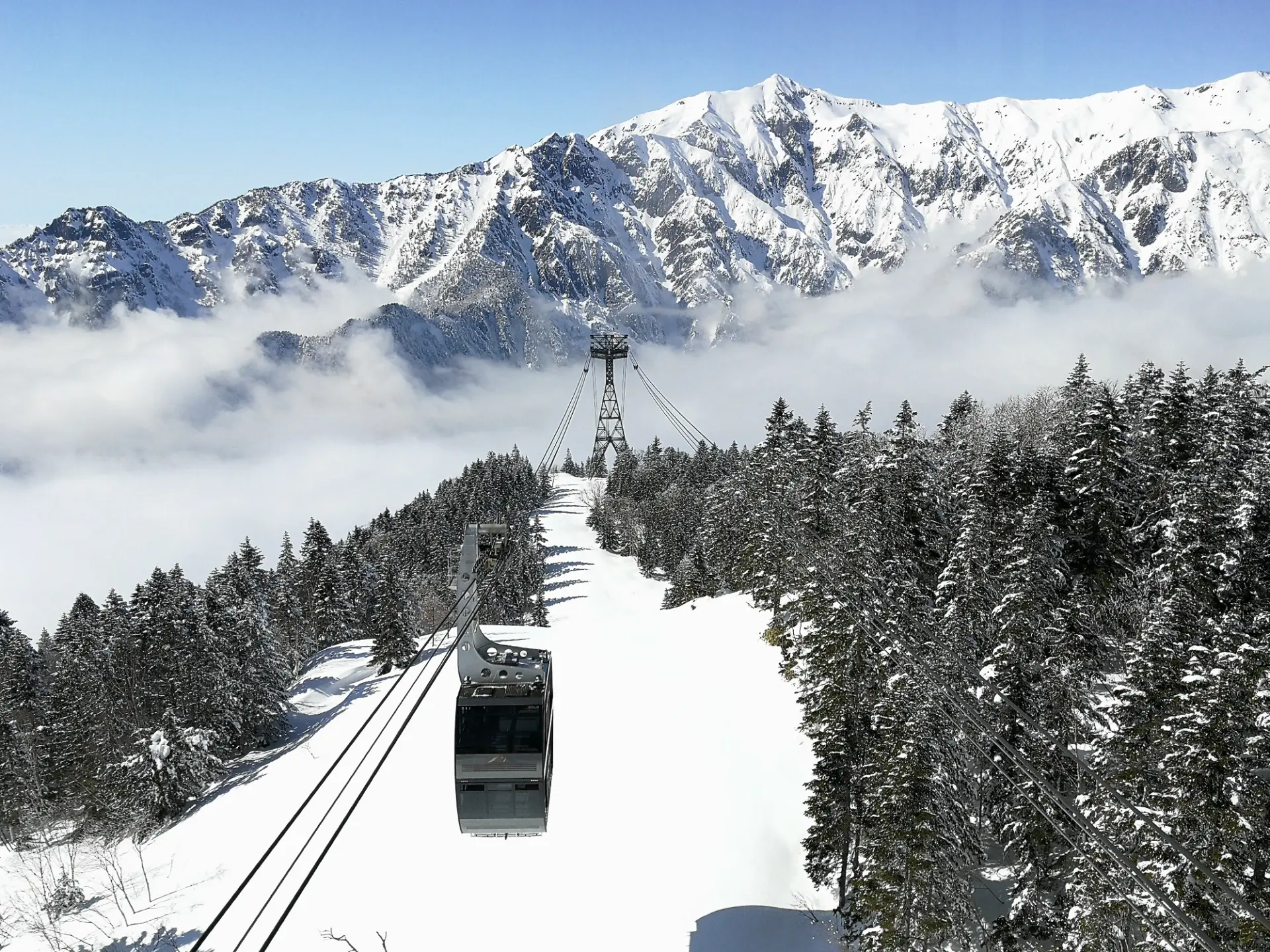
6. [Chubu] Naeba–Tashiro Gondola (“Dragondola”)
Japan’s longest ropeway route
Another must in Chubu is the Naeba–Tashiro Gondola. Linking the Naeba Ski Resort with the Tashiro area of Kagura Ski Resort, it stretches 5,481 meters—the longest ropeway route in Japan. The route is full of ups and downs, and near the 14th tower from the Naeba side, the line suddenly shifts from a steep climb to a rapid descent, giving the sensation of dropping straight down—a thrilling highlight. Of course, the scenery is equally spectacular, especially during the autumn foliage season, when the breathtaking views will leave you speechless. By the way, despite the popular rumor, the nickname “Dragondola” was not actually coined by singer-songwriter Yumi Matsutoya—it’s just an urban legend.
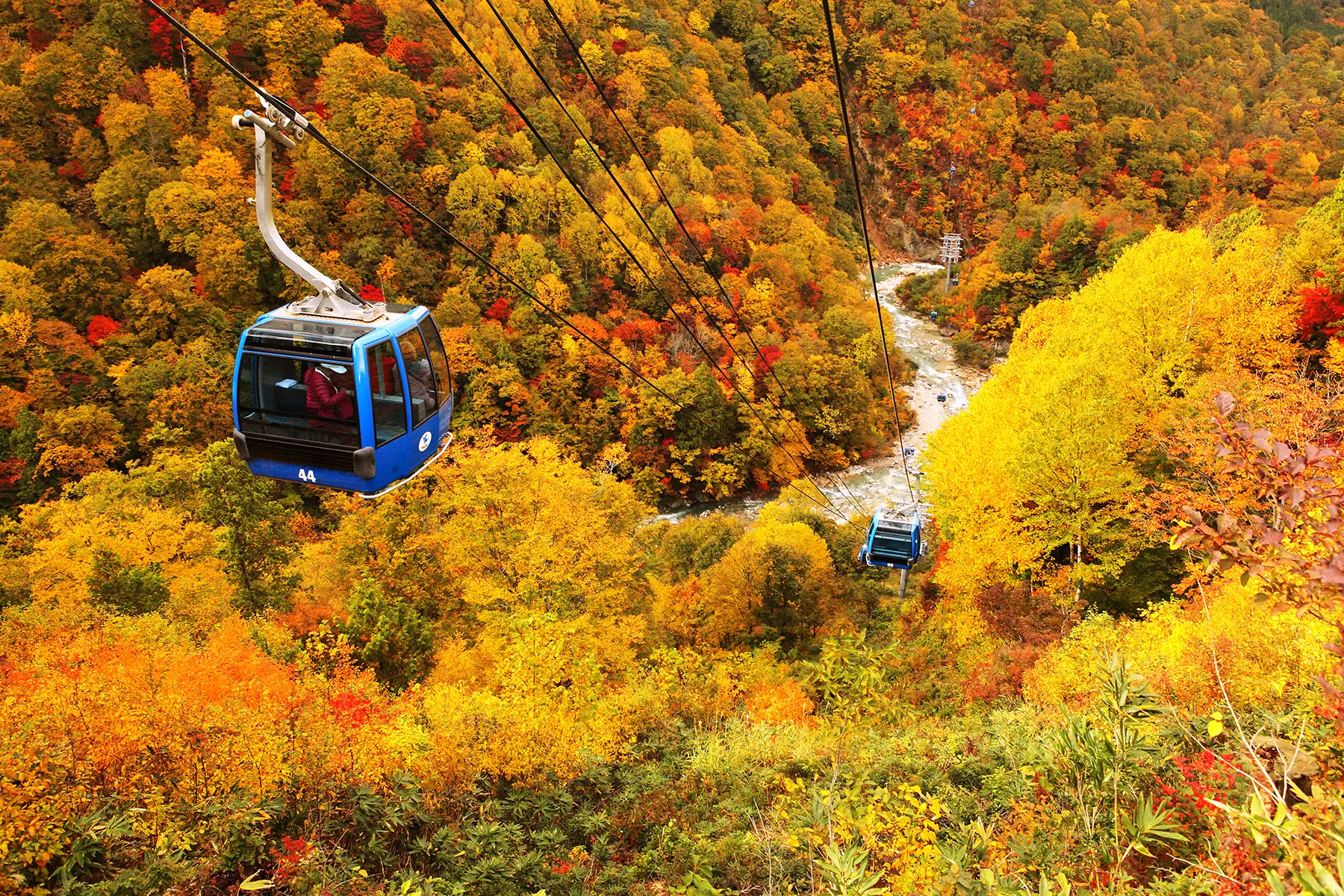
7. [Hokuriku] Tateyama Ropeway
A vast three-dimensional panorama spreading in every direction
Though Hokuriku doesn’t have many sightseeing ropeways, the Tateyama Ropeway stands out with overwhelming presence. As part of the Tateyama Kurobe Alpine Route that cuts through the Tateyama mountain range, it offers majestic alpine scenery that is simply breathtaking. The ropeway runs across a deep valley between mountains, making it the longest “one-span” system in Japan, with no towers between the base and summit stations. With no supports in the way and no tower vibrations to interrupt, you can enjoy an entirely unobstructed view.
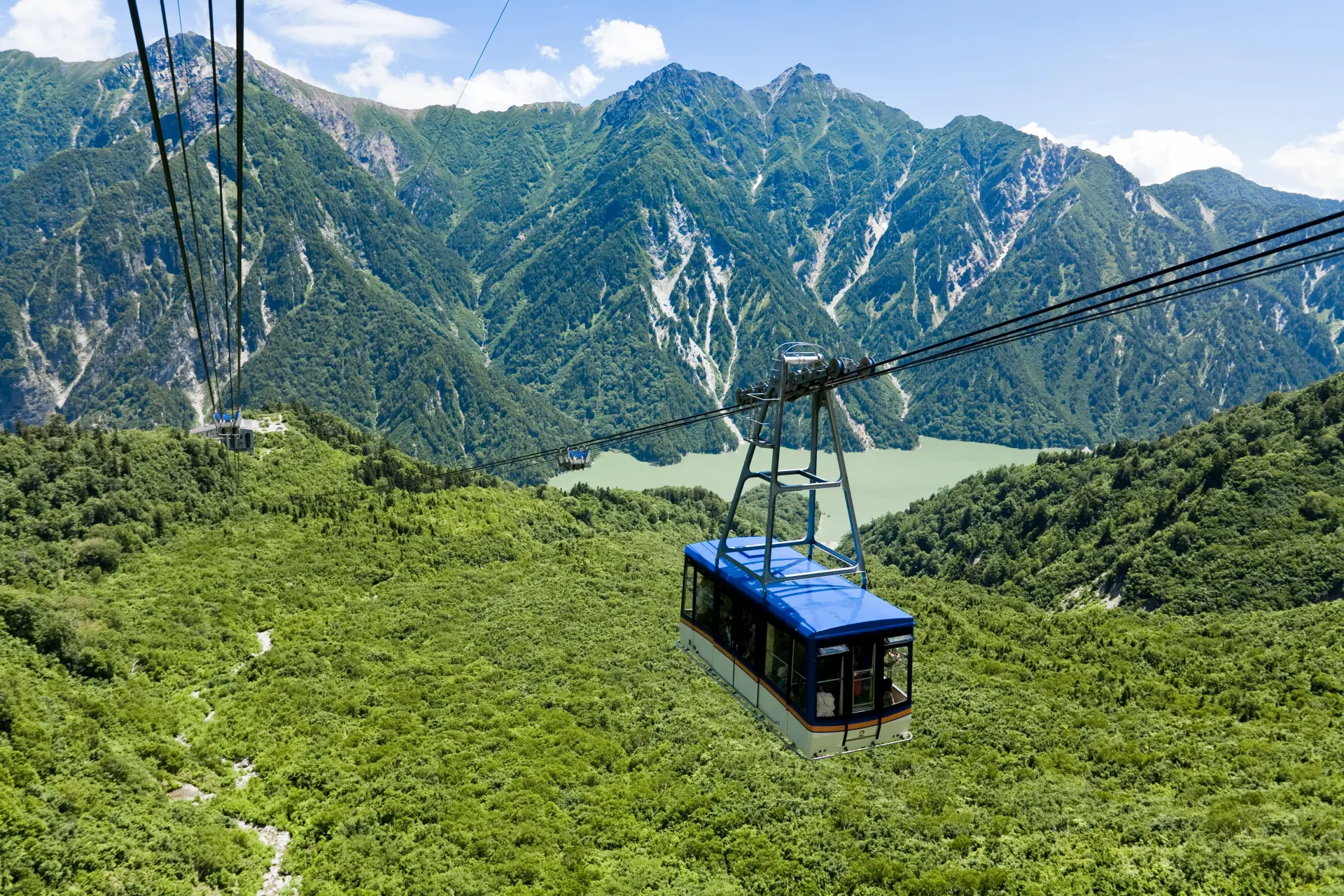
8. [Kansai] Kobe Nunobiki Ropeway
Kobe’s unique views of both the sea and the mountains, plus one of Japan’s best nightscapes
Kansai has many contenders, but my pick is the Kobe Nunobiki Ropeway. At 1,460 meters long with a vertical difference of 330 meters, it’s not especially large in scale, but it offers Kobe’s unique scenery where the mountains and sea lie close together. It’s a perfect route to experience the ropeway’s signature dramatic changes in scenery right up close. And of course, Kobe is renowned for its night view. Since the ropeway also operates at night, riding it to take in one of Japan’s three great nightscapes is highly recommended. Another bonus: the base station is only about a 5-minute walk from Shin-Kobe Station on the Sanyo Shinkansen. In fact, there are only two ropeways in Japan within walking distance of a Shinkansen station, and this is one of them.
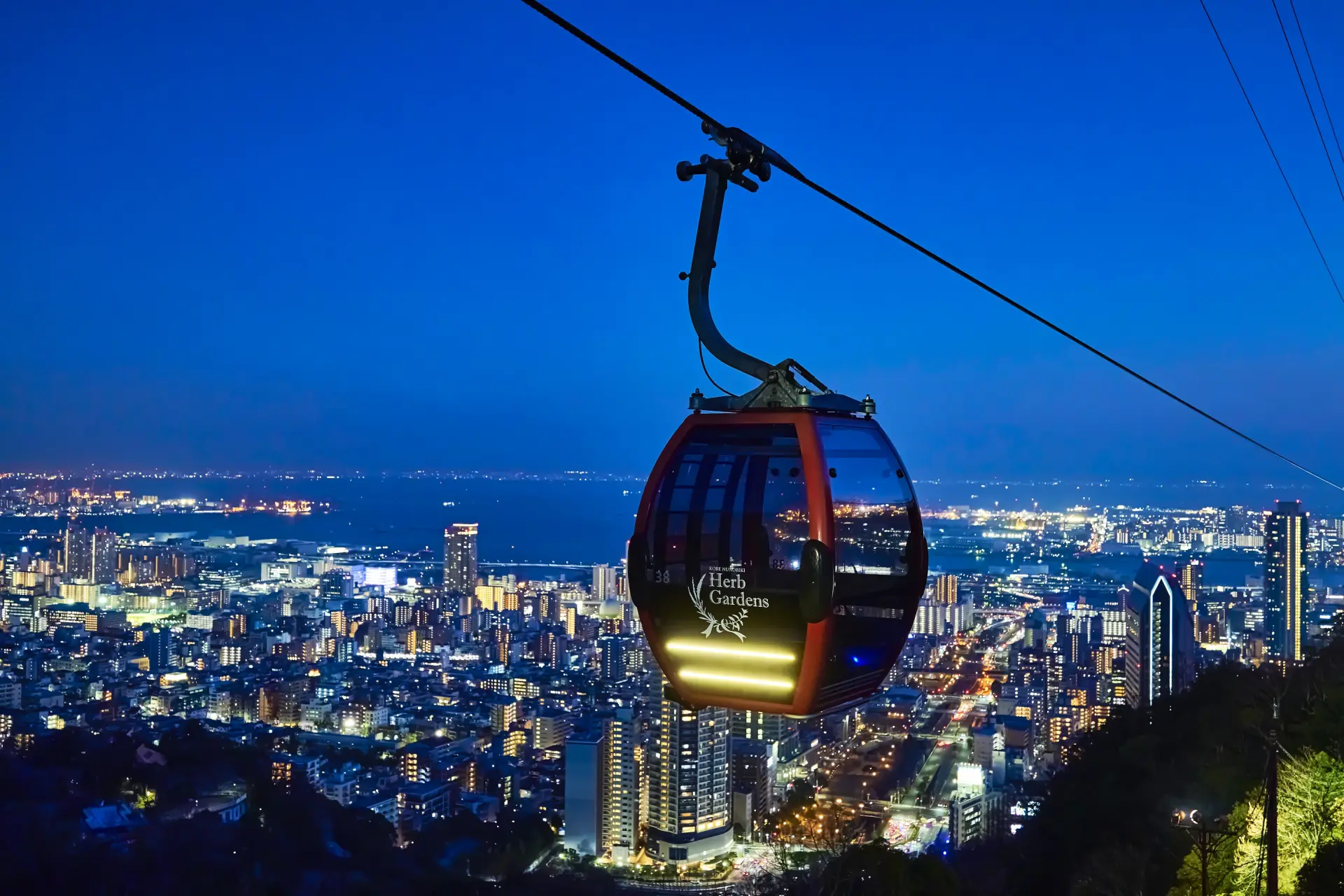
9. [Chugoku] Mt. Senkoji Ropeway
A simple ropeway that evokes nostalgia and travel sentiment
In the Chugoku region, while there are other noteworthy ropeways such as the Miyajima Ropeway and Iwakuni Castle Ropeway, on a personal “favorites” level, I’d choose the Mt. Senkoji Ropeway. It’s hard to describe—it’s not overly refined or stylish, but rather simple and unpretentious. That simplicity gives it a nostalgic, sentimental feel that I can’t help but love. The views are truly beautiful, and at the summit you’re rewarded with stunning scenery: the townscape of Onomichi, the bustling Onomichi Channel with its many ships, the islands of the Seto Inland Sea, and on clear days, even Shikoku in the distance.
It perfectly evokes the unique travel sentiment of the Seto Inland Sea.
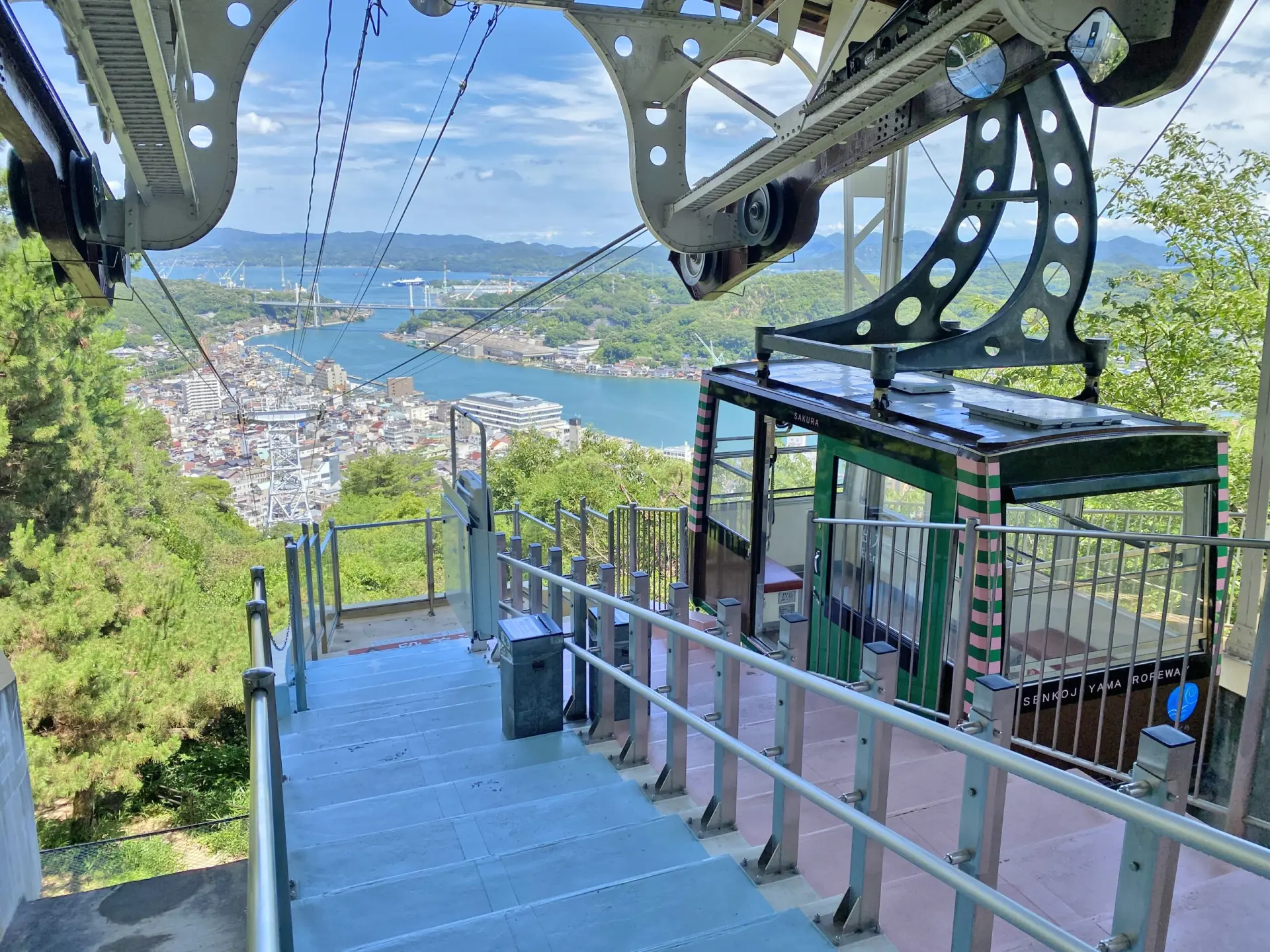
10. [Shikoku] Unpenji Ropeway
The grand-scale champion of western Japan’s ropeways
Shikoku also has many impressive ropeways, but my recommendation is the Unpenji Ropeway. Its defining feature is sheer scale. At 2,594 meters long, it is the longest ropeway in western Japan. Moreover, the distance between its No. 2 and No. 3 towers is 1,882 meters—the longest span between towers in Japan. At the summit stands Unpenji Temple, the 66th stop of the Shikoku 88 Temple Pilgrimage and the one at the highest elevation, drawing many pilgrims. Before the ropeway was built, it must have been quite a difficult place for them to reach.
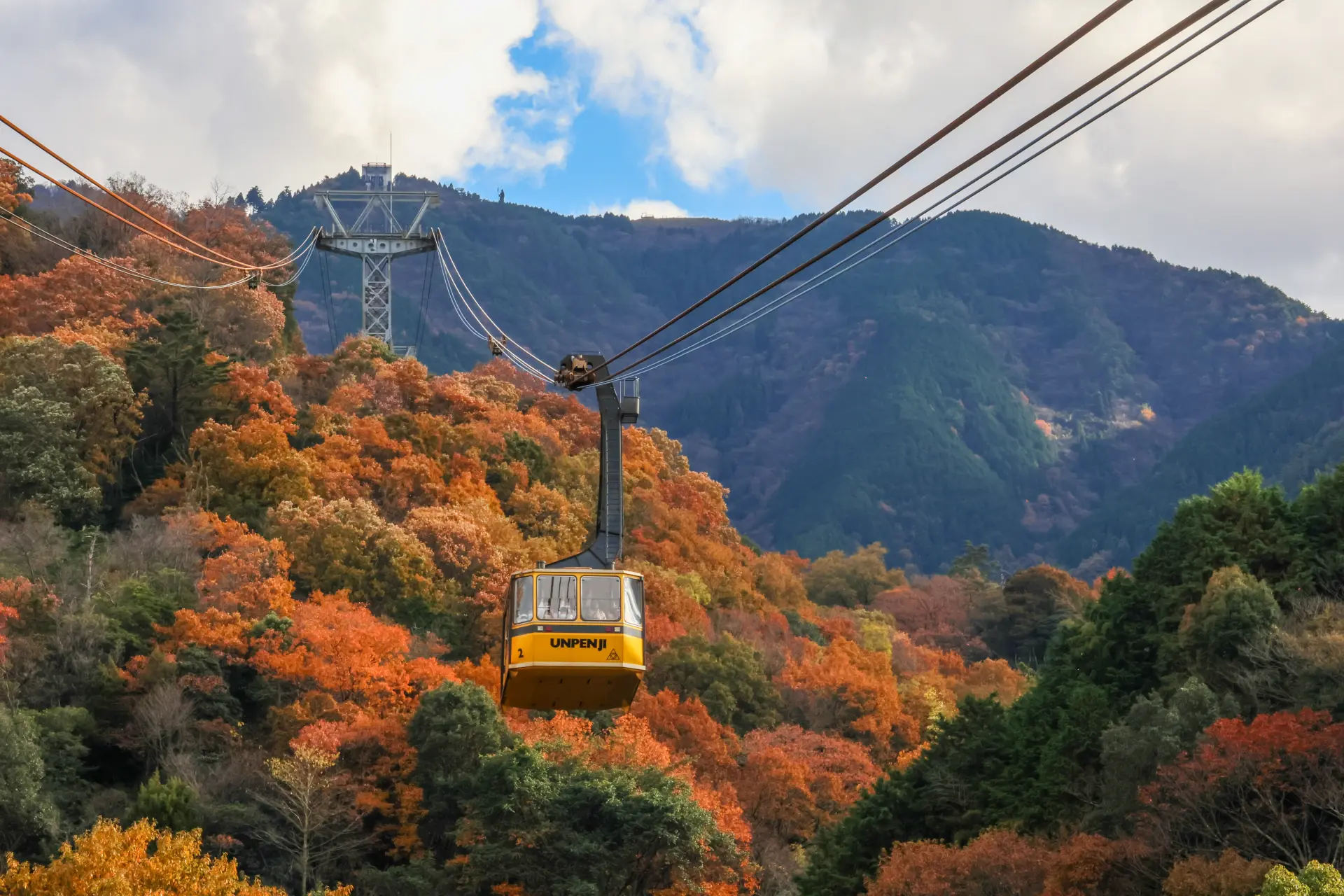
11. [Kyushu] Beppu Ropeway
Rare frost-covered trees in Kyushu’s midwinter
There are no ropeways in Okinawa, and only four in Kyushu, so it feels a bit sparse. Among them, my recommendation is the Beppu Ropeway. It spans 1,816 meters with an elevation difference of 793 meters, the fourth largest vertical difference among Japan’s ropeways. Its highlight is the frost-covered trees that appear around the summit station in winter. In recent years, they can be seen only on a handful of days during the three coldest months of the year, but this rare sight makes the Beppu Ropeway a particularly valuable route in Kyushu.
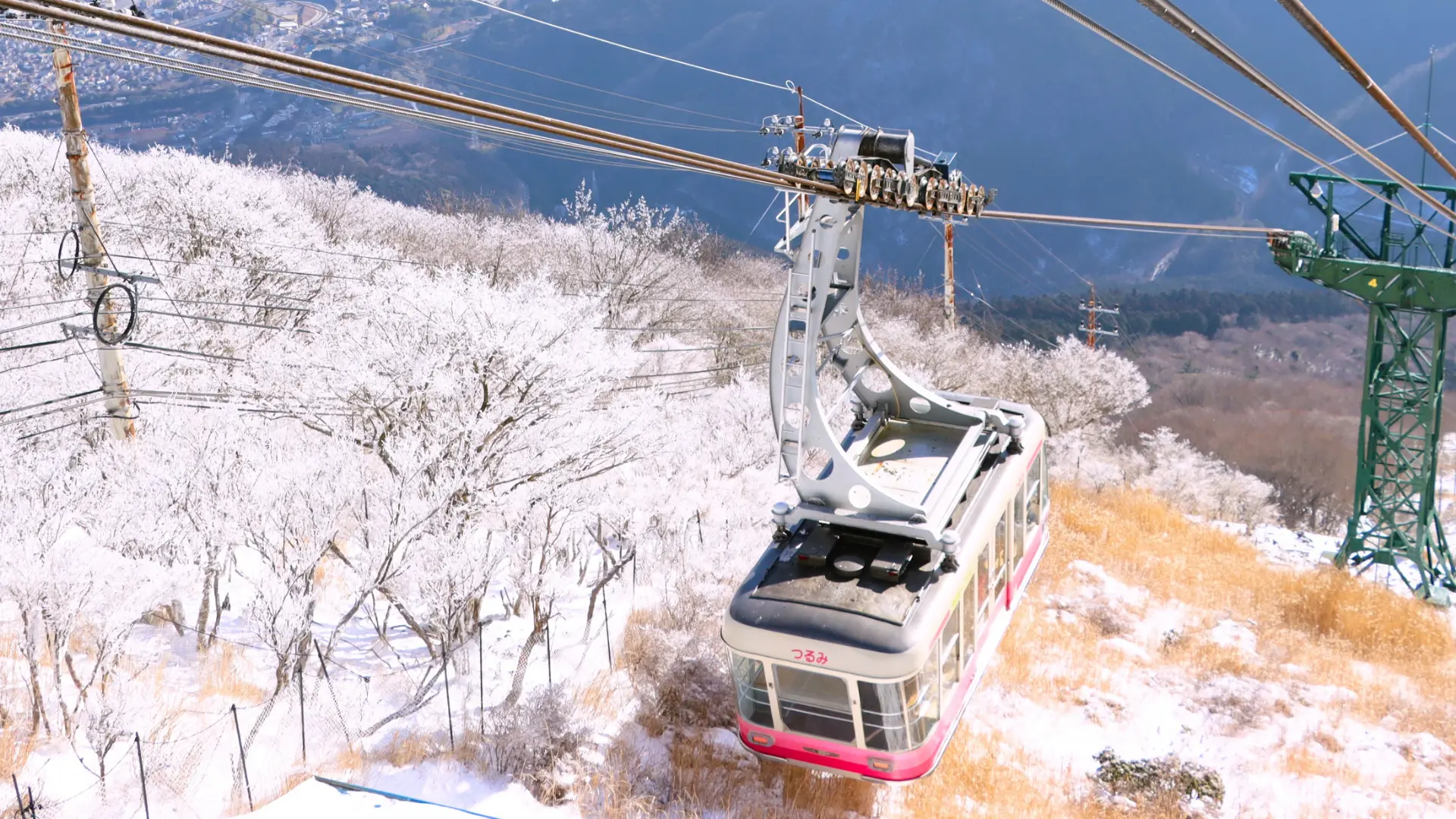
Wrap-up
Beyond the ride itself lie wonder, discovery, and inspiration!
Compared to ordinary railways, ropeways have far less publicly available information, which means there are many things you can only discover by actually riding them. While it may be difficult to ride them all, as Mr. Nakajima has done, the best way to enjoy ropeways is simply to try one at a nearby location or while traveling. Why not include a ropeway in your next trip plan? Surely, new wonders, discoveries, and moving experiences are waiting for you.
Supervising Editor
Ropeway Enthusiast
Makoto Nakajima
The more you ride, the more you get hooked! The appeal of ropeways!

